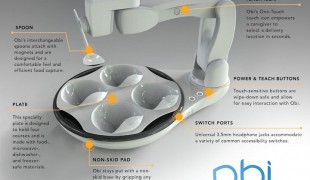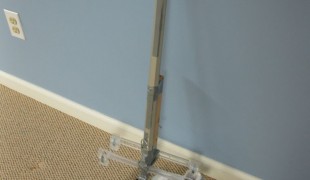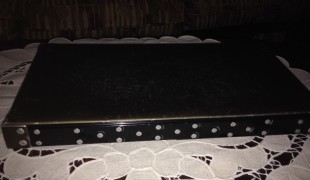- 2721
- 233
- 7
- 4
- 0
- Help Ukraine
About the solution
OXO is dedicated to creating user-friendly kitchen and household products that have redefined how people interact with everyday objects. Founded by Sam Farber, OXO's central mission is to enhance the lives of individuals of all abilities by making daily tasks more manageable.
Its core philosophy revolves around inclusive design. Their products are thoughtfully created to be accessible and practical for as many people as possible, regardless of age or physical abilities. Although OXO products are not explicitly marketed as assistive devices, they often serve as valuable tools for individuals with various physical challenges. OXO is well-known for its ergonomic product design. Each product is designed to be not only functional but also comfortable to use. Handles are cushioned, textured, and expertly shaped to fit naturally in the hand, reducing strain and discomfort during use. This ergonomic approach is particularly beneficial for individuals with arthritis or limited dexterity, making daily tasks more manageable and enjoyable.
Many OXO products are favored by individuals with various mobility challenges because the product line includes numerous items that help individuals perform daily tasks more independently. Each item is crafted from high-quality, durable materials, ensuring they can withstand regular use. This durability guarantees that these tools can remain part of a household for years, serving as reliable aids for individuals who rely on them.
OXO is not just a company that designs kitchen and household products; it is a pioneering force in creating innovative, inclusive, and ergonomic solutions for daily life. By prioritizing user comfort, convenience, and accessibility, OXO has made a significant impact on the lives of individuals with a wide range of abilities. Their products empower users to perform everyday tasks with greater ease and independence, exemplifying their commitment to "Tools for Living."
For more information go to: https://www.oxo.com/aboutus/
Follow them on their social media: https://www.instagram.com/oxo
https://youtu.be/0_FUYZjP3B0?si=DzO0Vlwo55VDIZnL
This solution shall not include mention to the use of drugs, chemicals or biologicals (including food); invasive devices; offensive, commercial or inherently dangerous content. This solution was not medically validated. Proceed with caution! If you have any doubts, please consult with a health professional.
DISCLAIMER: This story was written by someone who is not the author of the solution, therefore please be advised that, although it was written with the utmost respect for the innovation and the innovator, there can be some incorrect statements. If you find any errors please contact the patient Innovation team via info@patient-innovation.com
-
-
672
-
0
-
9951

Man creates device to help grandfather feed himself
Grip
(SELF)-CARE: EATING: Eating independently.
Arthritis
Cerebral Palsy
Neuromuscular Disorders
Muscular Dystrophy
Assistive Daily Life Device (to help ADL)
Difficulty walking or moving
Muscle weakness
Muscle cramps or spasms
Difficulty coordinating movements
Stiffness or rigidity (difficulty moving)
Limited range of motion
Muscle pain or stiffness
Reduced grip force (grip)
Loss of muscle coordination
Joint deformity
Joint redness or warmth
Joint pain or swelling
Restoring mobility
Promoting self-management
Managing Neurological Disorders
Medical Genetics
Neurology
Orthopedics
Rheumatology
United States
-
-
-
545
-
0
-
8916

Man creates device to help to put on socks, shoes and even trousers
Grip
(SELF)-CARE: DRESSING: Dressing independently.
BODY BALANCE: Maintaining body balance
STANDING UP: Standing up from a seated position
Knee Deformity
Assistive Daily Life Device (to help ADL)
Strategy/Tip
Muscle weakness
Limited range of motion
Muscle pain or stiffness
Reduced grip force (grip)
Loss of muscle coordination
Muscle cramps or spasms
Joint deformity
Joint redness or warmth
Swelling or inflammation
Difficulty bearing weight
Muscle twitching
Difficulty standing from a seated position
Difficulty getting up from the floor
Numbness or tingling in the extremities
Joint pain or swelling
Restoring mobility
Promoting self-management
Preserving Organ Function
Rehabilitating After Stroke
Managing Neurological Disorders
Recovering from Traumatic Injuries
Maintaining Balance and Mobility
Preventing (Vaccination, Protection, Falls, Research/Mapping)
Caregiving Support
Internal Medicine
Neurology
Orthopedics
Physical Medicine and Rehabilitation
Rheumatology
Sports Medicine
Vascular Surgery
United States
-
-
-
342
-
0
-
4584

Step articulated and mobile
MOVING IN A WHEELCHAIR: Moving using a wheelchair.
Traveling
Urban exploration
Paralysis
Assistive Daily Life Device (to help ADL)
Walking Aid (wheelchair/walker/crutches)
Restoring mobility
Promoting self-management
Managing Neurological Disorders
Building Supportive Community Relationships
Promoting inclusivity and social integration
Recovering from Traumatic Injuries
Maintaining Balance and Mobility
To improve Treatment/Therapy
Raise awareness
Caregiving Support
Neurology
Orthopedics
Rheumatology
Portugal
-
 en
en